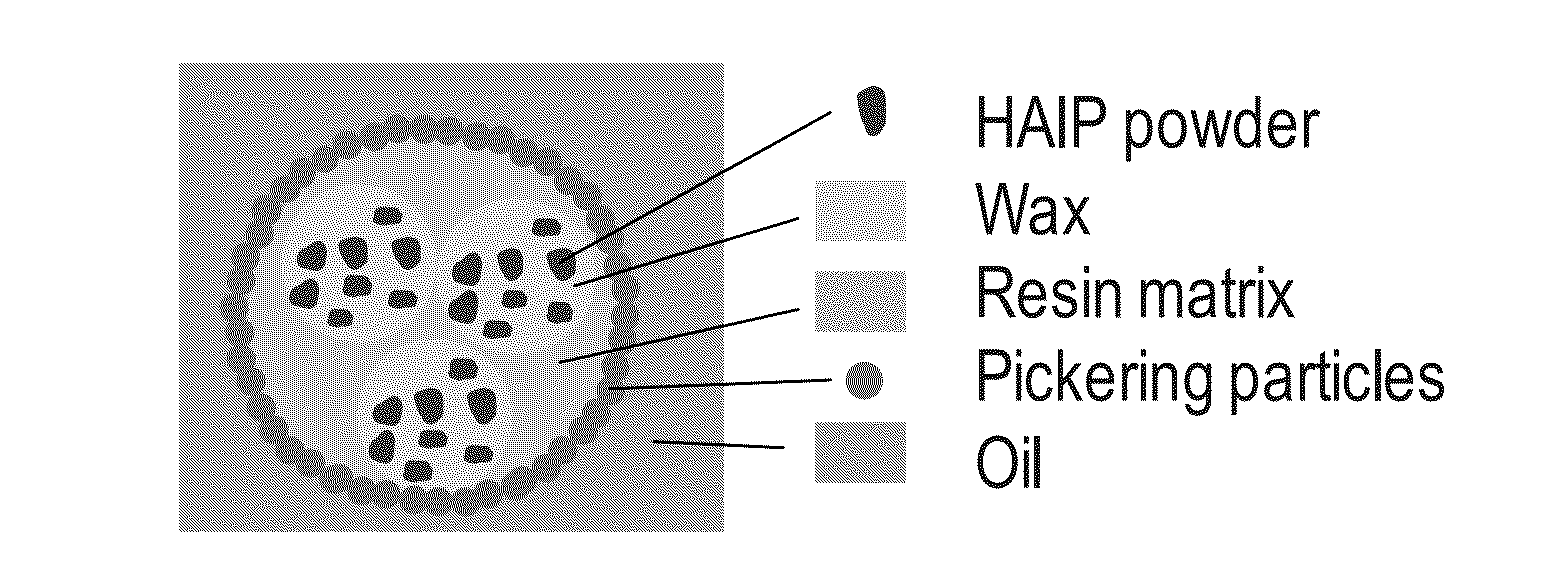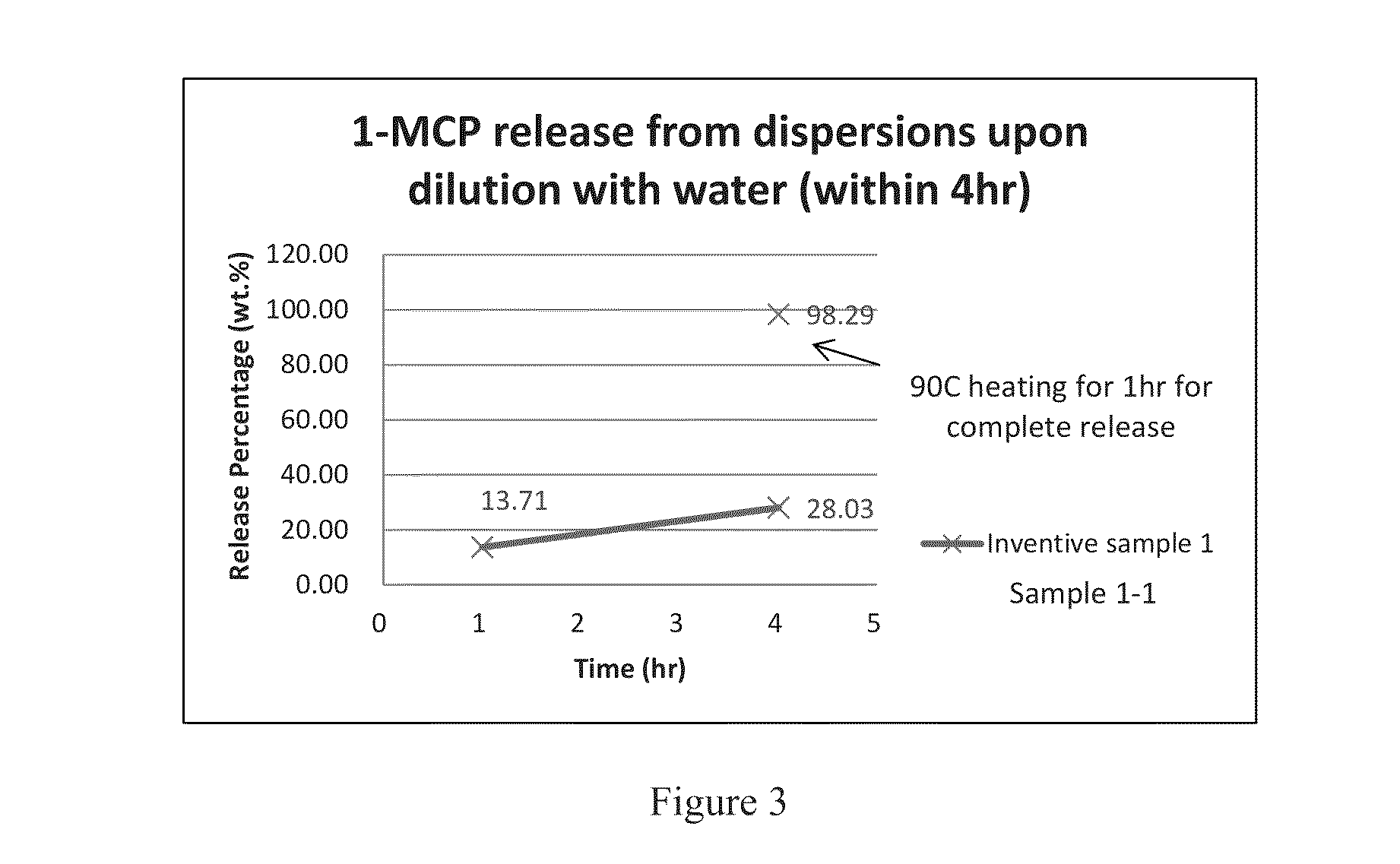Compositions and methods for double encapsulation of a volatile compound
a volatile compound and compound technology, applied in the field of compound and method for double encapsulation of volatile compounds, can solve the problems of difficult handling of 1-mcp, uneven ripening response of plants, and unfavorable us
- Summary
- Abstract
- Description
- Claims
- Application Information
AI Technical Summary
Benefits of technology
Problems solved by technology
Method used
Image
Examples
example 1
Sample Preparation and Testing
[0113]Release rate of 1-MCP in water diluted samples is investigated as follows: Mix about 3 grams of sample (described below) and 0.5 gram of surfactant in a 25 ml vial under shearing. About 0.6 gram of the mixture is weighted into a 250 ml glass bottle, and then 2 ml of millli Q water and 0.25 ml of cis-2-butene are added. The bottle is placed on a multi-purpose rotator under constant gentle shaking to ensure the sample is wetted and diluted by water, forming a milk-like emulsion. The 1-MCP gas released by the formulation in the glass bottle is tracked periodically up to 4 hours. The analysis of the 1-MCP concentration is done by gas chromatography (0.25 ml injections). After 4 hours, the bottle is heated in a water bath to a temperature slightly above the melting point of the wax for 1 hour to entirely liberate 1-MCP. From the measured concentration of 1-MCP, the amount of sample tested and the entire concentration of 1-MCP release after heating the ...
example 2
Images of Samples
[0145]FIG. 6 shows SEM images of HAIP air milled product and HAIP-carnauba wax blended particles (after grinding and sieving through 100 mesh). Typically, the HAIP has 3-5 μm particle size, but some aggregates of larger particles can be observed (see arrows in FIG. 6a1, and FIG. 6a2). There are many uniform fine holes in the cross-section of HAIP particles, as shown in FIG. 6a2, which might be artifacts resulting from HAIP being dislodged during the sample cutting SEM preparation. The blend of HAIP and carnauba wax can be reduced in size by hand or by using a grinder thanks to the brittle nature of the wax. However, their particle size mainly remains constant between 100 and 200 mesh (75-150 μm), as shown in FIG. 6b1. The inner structure of the blended particles (FIG. 6b2) is similar with that of the HAIP (FIG. 6a2), indicating HAIP particles have been uniformly embedded in the wax matrix.
[0146]FIG. 7 shows SEM images of encapsulated particles from Sample 1-3 and 1-...
PUM
 Login to View More
Login to View More Abstract
Description
Claims
Application Information
 Login to View More
Login to View More - R&D
- Intellectual Property
- Life Sciences
- Materials
- Tech Scout
- Unparalleled Data Quality
- Higher Quality Content
- 60% Fewer Hallucinations
Browse by: Latest US Patents, China's latest patents, Technical Efficacy Thesaurus, Application Domain, Technology Topic, Popular Technical Reports.
© 2025 PatSnap. All rights reserved.Legal|Privacy policy|Modern Slavery Act Transparency Statement|Sitemap|About US| Contact US: help@patsnap.com



